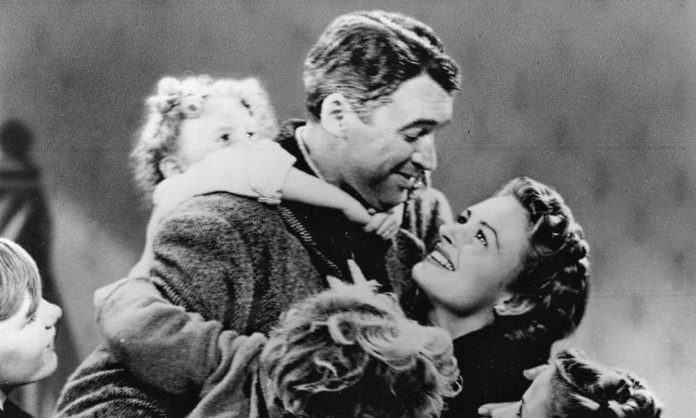In a post on the Killzone blog, James Scott Bell examines one of our favorite movies – It’s a Wonderful Life – and suggests some lessons writers can learn.
We assume familiarity with the story. Be warned of spoilers!
- Framing Devices. The movie opens and ends on the same Christmas Eve. In the beginning, people are praying for George Bailey’s safety and the angel Clarence hopes to get his wings. In the end, George is safe and Clarence has reached his goal. “A frame-story can add another level of emotion if you make it compelling in its own right,” Bell says. Titanic and The Princess Bride also use this technique.
- The Imperfect Lead. George Bailey is a good guy, but he’s also short-tempered, lashing out at his uncle and children at various points. He also doesn’t mind leering at his childhood friend Violet Bick. “The imperfect Lead creates empathy,” Bell writes. “The key, however, is that he is aware of his flaws, and wants to overcome them, as George does.”
- Strong Supporting Characters. “Every one of the secondary characters in Wonderful Life is well-drawn and engaging in their own right,” Bell notes. “Give each of your supporting characters, even the minor ones, their own unique quirks and tags.”
- A Rocky Romance. George has an on-again off-again flirtation with Mary, and almost blows their romance on multiple occasions. Readers love to read about love, but you can’t make it too easy. “In a scene of high intensity, find a competing emotion that fights for supremacy inside the character,” Bell advises. In George’s case, his love for Mary competes with his desire to leave Bedford Falls.
- The Mirror Moment. At the halfway point of the film, George is given a choice that will decide his future. Old Man Potter offers George a job at 10 times his salary, on the condition that he sell his family’s building and loan company. George refuses. “At some point in your writing—the planning stage or at any point along the pantsing highway—brainstorm five possible deep questions your Lead can ask about himself,” Bell writes. “What is the central inner issue at this point in the story? You’ll often find that the third, fourth or fifth idea is the one that jumps out at you as original and on point. And that’s when you know what your story is really all about.”
- Transformation. By the end of the movie, George has transformed from a man who resents his circumstances and belittles his hometown into someone who realizes the gifts he’s received and the gifts he’s given to Bedford Falls. This transformation is the answer to the question asked in the mirror moment above, Bell notes. It’s also signaled early in the movie, when young George insists he’ll leave town to explore the world. “Once you know the transformation, give your Lead a line or two in Act 1 that is expressing the opposite view,” Bell suggests. “The readers will experience a most satisfying character arc that way.”












